 The first picture shows what the Japanese Beautyberry is known for: its distinctive purple berries that appear in autumn and persist into the winter.
The first picture shows what the Japanese Beautyberry is known for: its distinctive purple berries that appear in autumn and persist into the winter.
The second picture shows what the plant looks like in the summer, on the lower left, beneath the Pee Gee hydrangea.
I like these two stages of the plant, but am less fond of its other stages: the early spring when it looks dead and is late to leaf out; and the autumn when the leaves droop and look lifeless for about a month before they fall off.
They are healthy and vigorous plants. I purchased very small plants and they grew quickly in the first year. Next year, I am cutting them back to six inches off the ground in early spring to avoid the first problem. Further, I keep moving them around my property in hopes of finding the perfect place to enjoy them, and they are not bothered by this.
For fall and winter arrangements, you can cut the branches with the Beautyberries. If you do so when they still have leaves, I recommend that you remove the leaves because they droop immediately after being cut.
***
Click here for a follow-up post on propogation: http://heirloomgardener.blogspot.com/2008/02/japanese-beatyberry-unexpected.html
Welcome to Heirloom Gardener
Monday, December 03, 2007
Japanese Beautyberry
Posted by
Julia Erickson
at
10:23 PM
![]()
![]()
Labels: Autumn Garden, Cut and Forced Flowers, Hydrangeas, Japanese Beautyberry, Shrubs, Summer Garden, Winter Garden
Subscribe to:
Post Comments (Atom)
Search Heirloom Gardener
Labels
- About Blogging
- Annuals/Biennials and Perennials
- Autumn Garden
- Books and Movies
- Botanical Gardens
- Bulbs and Tubers
- Children's Garden
- Chrysanthemum
- Clematis
- Container Gardening
- Crocus tommasiniasus roseus
- Cut and Forced Flowers
- Cutting and Rose Gardens
- Dahlias
- Deep Thoughts About Gardening
- Egg Garden
- Fences Arbors Walls and Paths
- Floral arrangements
- Front Border
- Fun Stories About Gardening
- Garden Bloggers' Bloom Day
- Garden Bloggers' Design Workshop
- Garden Planning
- Gardening Blogs
- Gardening Tools and Structures
- Gardening with Children
- Goldberry Hill
- Heirloom and Organic Food
- Hibiscus
- Holidays
- Hydrangeas
- Japanese Beautyberry
- Lilies
- Mixed Borders
- New Jersey / Local Interest
- Nurseries
- Online Gardening Resources
- Peonies
- Pest Control
- Picture This Photo Contest
- Piet Oudolf
- Poppies
- Propagation and Seeds
- Pruning and Maintenance
- Roses
- Seed Heads
- Self Seeders
- Shrubs
- Spring Garden
- Summer Garden
- Trees
- Wildlife in the Garden
- Winter Garden
- Zinia
Blog Archive
-
▼
2007
(48)
-
▼
December
(34)
- Salve for the Gardener's Winter Blues: How to Gro...
- Q. What Do You Do With Rocky Soil? A. Make Dry La...
- You Grow Girl Blog: Plant-Related Christmas Gift ...
- Q: How Do You Keep Deer Out Of The Backyard? A: ...
- Cold Climate Gardening Blog: Why Aren't There Mor...
- Common Witchhazel Blooming in December
- Christmas Decorations from the Garden
- Cut Heavenly Bamboo (Nandina)
- Heavenly Bamboo (Nandina) in December
- The Garden in Winter by Suzy Bales
- Container Gardening: Autumn Cleanup and Rosemary ...
- Gardening with Children: How to Build a Children'...
- Gardening Gone Wild: Fences, Walls & Paths
- Heirloom Gardener Magazine
- Heritage Rose: Flowers in December
- Old Farmer's Almanac Gardening 2008 Calendar
- Garden Planning Before the Catalogs Arrive
- Creating the Rose Garden with a Central Brick Path
- Gardening with Children: Creating the Children's ...
- Complicata Rose Hips
- Winter Garden Highlight: Annabelle Hydrangea
- Brooklyn: Private and Public Gardens
- Russell's Cottage Rose
- Hansa Rose
- Star of the Republic Rose
- Japanese Beautyberry
- The Hellenbrechts in Ohio: Christmas Green
- Dortmund Rose Hips
- Blackberry Lily Seedheads
- Container Gardening: Winter Containers
- Vegetables and Herbs: How to Build Raised Vegetab...
- Ballerina Rose Hips
- Crabapple Tree in Winter
- Hydrangea Wrapped For Winter
-
▼
December
(34)










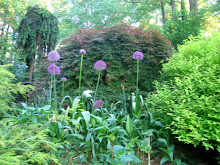
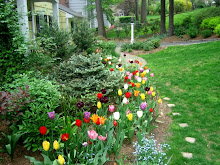
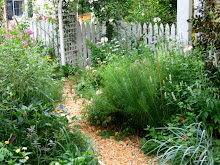
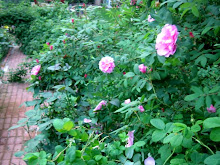

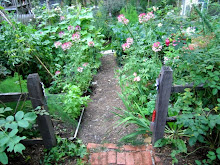

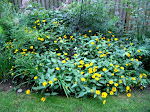





No comments:
Post a Comment